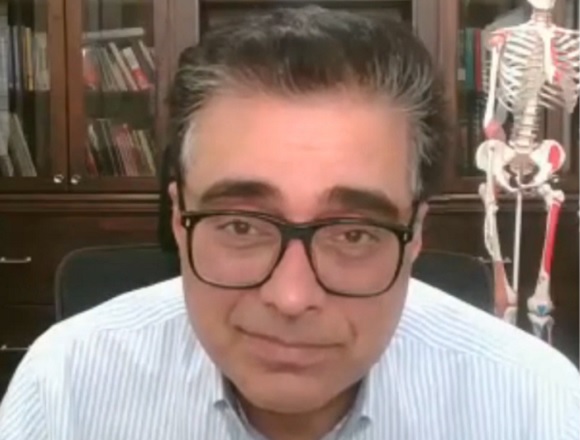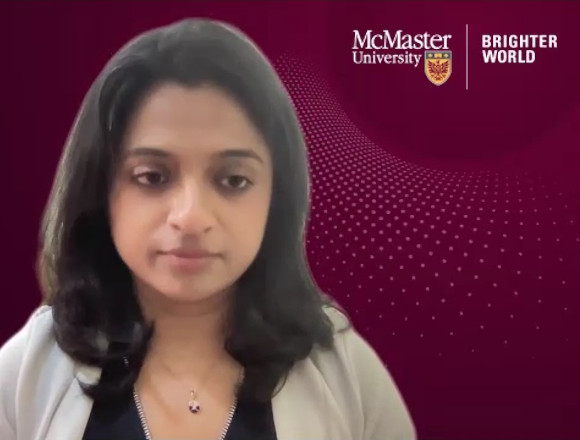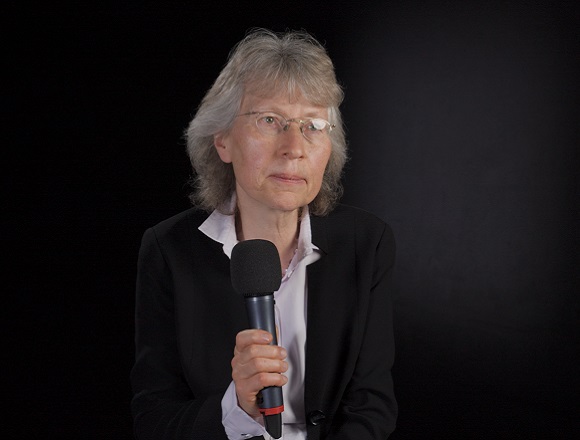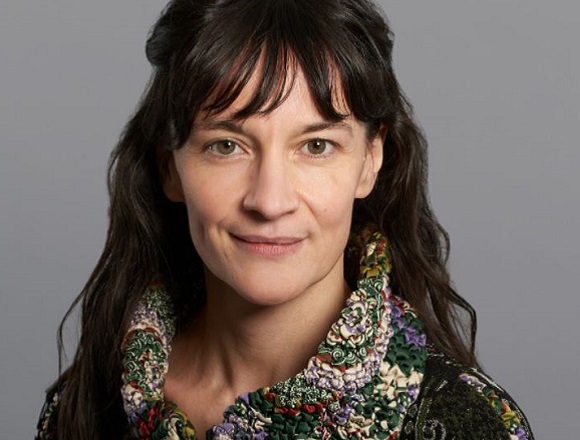Dr Salim Yusuf, an internationally renowned cardiologist and epidemiologist, distinguished university professor at McMaster University, and executive director of Canada’s Population Health Research Institute, connects with Dr Roman Jaeschke to explain the concept of a polypill for cardiovascular disease (CVD) prevention and discuss the limitations of the concept of the number needed to treat (NNT).
Suggested reading
Yusuf S, Joseph P, Dans A, et al; International Polycap Study 3 Investigators. Polypill with or without Aspirin in Persons without Cardiovascular Disease. N Engl J Med. 2021 Jan 21;384(3):216-228. doi: 10.1056/NEJMoa2028220. Epub 2020 Nov 13. PMID: 33186492; PMCID: PMC7116860.
Roman Jaeschke, MD, MSc: Good morning. Welcome to another edition of McMaster Perspective. We have a special guest today, distinguished professor of cardiology and medicine at McMaster University, Professor Salim Yusuf. He has a lot of different titles, including past president of the World Heart Federation and founding and executive director of the Population Health Research Institute—major research organizations from which a lot of major studies about which we all hear are coming.
Professor Yusuf, welcome and thank you for agreeing to provide us with your time. The reason that I asked for this interview was the paper that I looked at that dealt with effects of what is labeled as polypill on cognitive and functional situation of elderly people. [doi:10.1001/jamaneurol.2022.5088] It sounds a little enigmatic to people who don’t know what it is about. Would you mind introducing to us both the concept of polypill and then your own achievements in this area?
Salim Yusuf, MBBS, DPhil: We now know several things. First, that statins that lower low-density lipoprotein (LDL) lower [the risk of] cardiovascular disease. We also know that blood pressure lowering, especially combination drugs, will also lower blood pressure to a great extent and will reduce cardiovascular disease. In high-risk patients aspirin also benefits people. So the concept is very simple. First, if we combine these drugs, we should get a bigger effect on risk factors and that should translate to a bigger effect on clinical events.
The second [thing] is, given that these things are safe, the additive used doesn’t increase side effects. But something that is even bigger is that in most evaluations of drugs for prevention we have chosen high-risk people, or people [already] with cardiovascular disease, and the problem is that only 10% to 20% of cardiovascular disease events in a community come from the high-risk people. So if we focus only on the high-risk people—that is, secondary prevention—we will lose the opportunity of intervening in 80% to 90% of the source of events. It will be more than 80% and 90% of the population, maybe even 90% or 95%.
The 2 striking things are that by giving the polypill, especially with aspirin in primary prevention, we can reduce cardiovascular events by 50% within 5 years. That is huge. And given that cardiovascular disease is the commonest disease burden in the world—23 million people die from cardiovascular disease and 2 to 3 times that number have nonfatal events, like a nonfatal heart attack or stroke—we’re talking about… If everybody uses it… of course, not everybody will use it, but let us just say a quarter of the people use it, we will be preventing about 15 million premature cardiovascular disease deaths and cardiovascular events every year.
Now, obviously, if everybody uses it, or 90% use it—if the numbers are higher—this will be as big a public health impact as complete cessation of tobacco worldwide. So that’s not real.
The second thing is the polypill is highly cost-effective. In fact, [it leads to] cost savings because if you prevent hospitalizations, and revascularizations, and heart failure, you save costs. So this is a highly cost-effective therapy and by a simple strategy of taking people over a certain age—say, 50 or 55 years—and maybe one simple risk factor that you know—that is, self-reported hypertension, self-reported diabetes, age, as I told you, or self-reported cardiovascular disease—there is no intensive screening needed and yet you pick up a large part of the people who’d get future events. Screening becomes inexpensive, and it’s easy for doctors. And for that matter, doctors are not the primary people we should use in prevention. We should be using nonphysician health workers. Several studies have shown that.
The polypill is a delivery mechanism to take 3 sets of interventions—it could be 2, it could be 3 sets—putting them into a simple pill and giving it at moderate doses, not high doses, so that you don’t risk side effects, and it’s delivered by nonphysicians. This makes prevention incredibly effective and incredibly cost-effective. That’s the concept of the polypill. The trials now show that you can reduce cardiovascular disease by 50% despite modest difference in LDL—only 0.6 mmol/L, not the ≥1 mmol/L that you get with intensive therapy. Blood pressure’s only lowered by 6 mm Hg, which is not as big as 20 mm Hg [that you get] with intensive blood pressure lowering with hypotensives, and yet you get a big effect but very few side effects.
That’s the big advance. The challenge is putting it into practice simply because of 2 things. The first is the mindset of physicians: you’ve got to take each drug and titrate individually, and do it one patient at a time. When you have a condition that will affect… [when] almost the entire adult population is at risk, you cannot do treatments one by one. You have to take a mass approach. It’s like saying we’re going to do vaccination but we’re only going to do it in certain high-risk groups. That’s not very cost-effective. Not very sensible either.
So the first thing is to change the mindset of physicians. What this involves is that the treatment paradigm becomes close to a population paradigm, and for some things you need an individualized paradigm. For instance, you use the polypill as a general thing, and then if you still have people with elevated blood pressure or elevated lipids, you can individualize what else you do. Individualized medicine and a broad approach, a population-based approach, are complimentary, they’re not contradictory.
Roman Jaeschke: You’re making a very compelling argument here. Thinking about it, I do not believe it would happen on the individual physician level, because you will have to convince thousands, if not hundreds of thousands in some countries. It would be on a public health interventions [level] and [require] organizational support for such programs. Do I understand it correctly?
Salim Yusuf: Exactly, that’s right. That’s the second challenge, convincing physicians to use it. The third thing is because all the components of the polypill are generic, there is little profit to be made by pharma companies, which means the Big Pharma are not interested. This has been our biggest challenge. We’ve got some small companies to market it, but they are usually country by country. They may market it in one country, or two, or one region, but not globally. Some companies like Eli Lilly are considering developing a polypill for diabetes that would be marketed at low cost worldwide. So that’s the second thing.
The third thing is the thinking of organizations like the World Health Organization (WHO), which thinks, “You only have to use drugs in high-risk people.” That’s perfectly fine if you have drugs that are expensive or drugs that are not safe, but when 80% of your events come from the average risk group, that strategy means you’re missing out on 80%. So there’s a huge educational challenge on the WHO level and at the guidelines level, which we are working on.
We have now submitted an application to the WHO to include the polypill in the essential medicines list for diabetes and hypertension primary prevention in addition to secondary prevention. That’s a starting point. Once that’s approved and people start to use it—that’s still hundreds of millions of people in the world who would benefit—then people will start to gradually expand the indication. So our strategy for the next decade—you take at least a decade—is to support various companies to develop polypills and then to try to get the polypill into guidelines with a change because in WHO strategies, you need a 10-year X percent risk—it used to be 20% risk, that is 2% per year, to prescribe drugs, like for blood pressure, and they are lowering that to 15% or 10%. That’s getting closer to a population paradigm.
The paper that piqued your interest was the one on the polypill and cognitive function. As you know, cognitive dysfunction is epidemiologically related to elevated blood pressure and elevated lipids. However, not a single study has shown that reducing lipids and blood pressure clearly, with one or two exceptions, reduces dementia or cognitive dysfunction. The SPRINT study had a hint in one paper, but then later on it disappeared. So we thought the polypill would be a good intervention to test. We tested it and most of the scales that we measured did not show any beneficial effect but didn’t show any harmful effect either. But some of the scales, like the Standard Assessment of Global Everyday Activities (SAGEA) scale that measured physical function—and physical function in frailty is part of cognitive decline—seem to benefit. This requires confirmation.
I wouldn’t say this is the be-all and the end-all and it may well be that dementia due to vascular disease may be a different process from heart attacks or strokes due to vascular disease. This might be more microvascular disease and maybe standard interventions are not the ones for it.
There’s one trial with dulaglutide Hertzel Gerstein published that showed an improvement in cognitive function in a large randomized trial. Dulaglutide and incretin-based treatments do have some added benefits, including weight loss, and we are seeing weight is a strong predictor of cognitive decline and magnetic resonance imaging (MRI) changes of the brain. So I think the polypill area is not necessarily the final answer to dementia, but it certainly has given us leads, which we are exploring.
The other thing is we have been working with the Global Burden of Disease people and their estimate is that the polypill in the net by 2050 [with] 50% use will prevent 120 million premature deaths in the world.
Roman Jaeschke: Well, I’m not sure whether we will observe this, but these are extremely compelling reasons. I looked at your original paper on primary prevention [doi:10.1056/NEJMoa2028220] in people who had some risk factors—as you mentioned, age, hypertension, lipids, diabetes, or whatnot. It appears that the absolute difference in something like major events or even mortality over the period of a few years was, for mortality, close to 1%, meaning that you would probably need to subject about 100 people to treatment to prevent 1 death.
Salim Yusuf: Roman, this is where McMaster has distorted the world.
Roman Jaeschke: Okay, so please straighten me out.
Salim Yusuf: This number-needed-to-treat (NNT) concept is okay for high-risk people, in treating people, but it is not the right principle… yardstick to use for prevention. If you did that for vaccines, you’ll never vaccinate anybody in the world with anything. So it’s actually quite a short-sighted thing. You’ve got to think of NNTs in multiple concepts: 1% spread out around the whole world is huge.
Roman Jaeschke: Absolutely.
Salim Yusuf: One percent in terms of very high-risk populations is tiny. So I think you’ve got to say, what is the population at risk? Does one person make a big difference? What is the cost of the treatment? What are the side effects of the treatment? Clearly if the cost is high and if the side effects are high, then we need a different yardstick.
I think the NNT concept is a big disservice to public health. It works in the context of clinical medicine, and the honest answer is, something that is expensive today 20 years from now will be inexpensive. For instance, statins were considered expensive when they first came out. Today they’re like sweeties. So I think the fundamental thinking around the NNT needs to be reoriented, and it needs to be targeted for different interventions, different types of populations, with the side effects and all of those of course. This is one of the mindless things that have come out of McMaster, sorry to put it that way.
Roman Jaeschke: Well, it’s an interesting concept. You are a public health promoter in a big way and your perception here is crucial, and you made a very compelling point both for the polypill and for the public health perspective on its use.
Professor Yusuf, I want to thank you very much for this part of the interview, and with your permission we will record something more. Thank you very much for your time.
Salim Yusuf: Thank you. You know what, before you go…
Roman Jaeschke: I am not going anywhere.
Salim Yusuf: Before you end the recording… I am not saying the NNT doesn’t have a value. In certain circumstances, with expensive therapies that have side effects, in certain disease states they do have a value.
Roman Jaeschke: I understand.
Salim Yusuf: So I think that’s the distinction that I think, if we all made, we will actually benefit health more than [through the] blanket use of an NNT number.
Roman Jaeschke: Yeah, I mean, the NNT may mean completely different things. If the burden of an intervention is extremely long, extremely expensive, and carries side effects, as you are pointing out, even if it’s long but inexpensive without side effects and with a low burden on the person, the look at it needs to be different. Thank you very much once again.
Salim Yusuf: My pleasure.
Roman Jaeschke: And I hope to host you again soon. Thank you.
Salim Yusuf: Thank you.
 English
English
 Español
Español
 українська
українська











